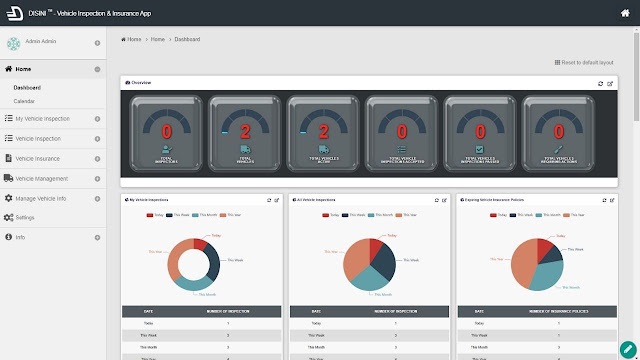3 Common Problems with App Development (and How to Easily Fix Them with Joget v6)
In recent times, enterprise application development has advanced greatly with the introduction of new technologies and techniques like the no-code/low-code dev approach, but that doesn't mean it's completely without some challenges. In fact, the wave of innovation that's going across the development market has brought with it new challenges that both professional developers and business users are coming across on a regular basis.
Today, we want to discuss three of the most commonly encountered problems in the app development process and how Joget v6 can help you fix them effortlessly.
Being one of the most fundamental stages of the development process, testing is necessary for discovering bugs and receiving feedback from users. It ensures that the app is working as intended and that every requirement is met.

Beyond complete elimination of the testing process, there's also the problem of poorly-performed test cases which take place across organizations. And it's not uncommon for such test cases to introduce errors in the application. It can leave the app in a buggy state, unnecessarily increase development time, and ultimately sabotage user experience.
At times, poor testing can be as a result of the tools you use. But most times, it's usually as a result of internal shortcomings like:
1. LACK OF “PRE-RELEASE” REVIEW AND TESTING
One of the main causes of application failure/error is lack of pre-release review, or testing; it's a major threat to successful enterprise application development.Being one of the most fundamental stages of the development process, testing is necessary for discovering bugs and receiving feedback from users. It ensures that the app is working as intended and that every requirement is met.
Beyond complete elimination of the testing process, there's also the problem of poorly-performed test cases which take place across organizations. And it's not uncommon for such test cases to introduce errors in the application. It can leave the app in a buggy state, unnecessarily increase development time, and ultimately sabotage user experience.
At times, poor testing can be as a result of the tools you use. But most times, it's usually as a result of internal shortcomings like:
- Lapses in the testing process
- Rushing it due to overly aggressive deadlines
- Testing conducted without seriousness or import given to it
- Scarcity of skilled testers
- Pure ignorance etc.
- Determine your test objectives. Your team should have clear goals and objectives which are metric based, to have a quality testing. And the test objectives should include both internal and external goals.
- Collect data and fix bugs. Testing is pointless without getting feedback, keeping an eye on test metrics, and solving problems for improvement. Collecting data will need you to maintain traceability between the requirements, test cases, and bugs.
- Create a prototype. A prototype is an early model or release of software built for testing. Through prototyping, you'd be able to easily test your app — for working, visual, user experience, functionality requirements as well as for identifying and removing errors.
- Traditionally, testing is often conducted as an afterthought at the end of the development cycle; this creates room for some weaknesses. But Joget allows users to test their apps even while still in the works, so that vulnerabilities can be addressed in a timely and thorough manner.
In Joget, you can easily generate a prototype from a form using the App Generator tool.
2. INFERIOR SECURITY
Security has always been a major concern in enterprise application development. It's a key part of both the build process and the product, and yet one of the most common issues facing developers today.
The 2016 HPE Cyber Risk Report finds that 72% of web apps have at least one encapsulation flaw, and that 90% of these vulnerabilities are caused by security functions such as access control and encryption.
Good app security ensures application confidentiality, integrity, and availability. It ensures that unauthorized access to the system is adequately detected and controlled, especially in critical applications or those that process sensitive information.
Joget v6 comes with an enhanced security, built around Multi-Factor Authentication (MFA) which works with Time-based One-time Password (TOTP) security tools like Google Authenticator and Microsoft Authenticator.
MFA is a security measure aimed at securing user logins. It works by adding an extra layer of protection to a username-password combo.
Overall, Joget v6 has a 5-star HP Fortify On-Demand Security rating.
3. DIFFICULTY IN MAINTENANCE
Building an app for your employees is great, but there's much more to app development than initially building and handing it in. If you want your app to remain useful over the long term, you'd have to incorporate maintainability into your strategy.App maintenance is so critical that traditionally, industry experts would usually advise you budget, for maintenance, about 15 to 20 percent of the original development cost, which means if your app costs $100,000 to build, you should roundly estimate to invest about $20,000 per year to maintain the app.
You wouldn't purchase a car and not expect to invest in maintenance liabilities like gas, servicing etc., would you? It's the same for apps!
Some of the business apps in existence today were initially built in an unstructured manner and then patched on an as-needed basis. This results in what is called “spaghetti code.” Spaghetti code is almost impossible to debug and maintain given its complex and tangled control structure. To add to the problem, when changes are effected in this kind of construct, there's usually a higher risk of creating new defects unintentionally.
Joget follows a no-code/low-code approach for building enterprise web applications, and a key focus in Joget Workflow v6 is enhanced app maintainability, supported by the new Advanced Tools.
CONCLUSION
In building your apps, it's important you concretely address these three key issues:- Testing and reviewing the app with potential users to uncover and eliminate problems, and to make improvements.
- Adopting or activating adequate security measures
- Pushing for a platform that provides effective maintenance tools.
You can see more good stuff available in Joget Workflow v6 here. As at the time of writing this, Joget Workflow v6 is available but only in beta for testing works. If you want a stable release for full development, Joget Workflow v5 is readily available here.


Comments
Post a Comment